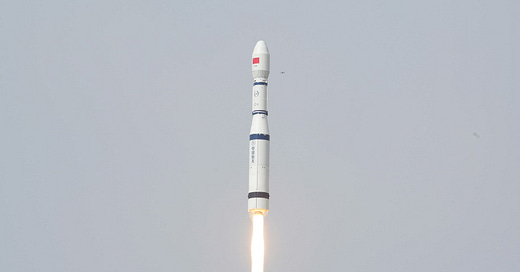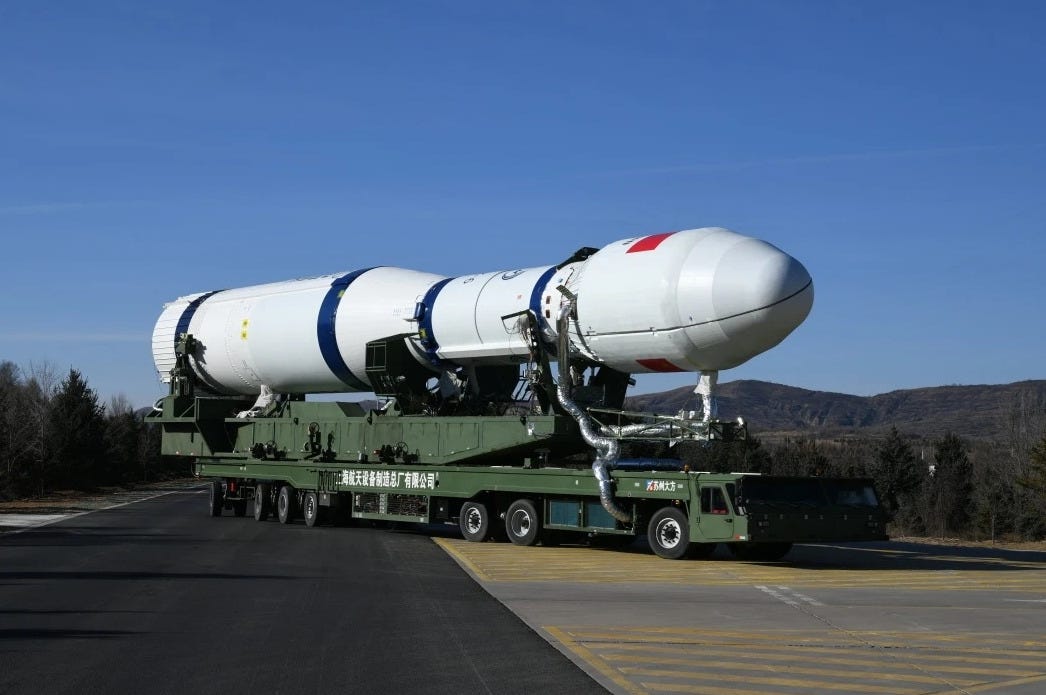Orbital Surveying Fleet Grows [Long March 6 Y14]
A Long March 6 has launched an additional Tianping-3 satellite
A Long March 6 lifted off from Launch Complex 16 at the Taiyuan Satellite Launch Center, at 10:12 am China Standard Time (02:12 am Universal Coordinated Time) on April 3rd. Today’s launch had a single satellite delivered to low Earth orbit.
The spacecraft delivered into orbit is Tianping-3A-02 (天平三号A星02星), following three other Tianping-3 satellites launched in October 2024 aboard the previous Long March 6. Reportedly, Tianping-3A-02 will provide atmospheric space environment surveys and orbital prediction model corrections, based on data gathered about the low Earth orbit environment. Additionally, the satellite will be used to calibrate ground radar as well as for radar cross-section measurements.
The Institute of Microsatellite Innovation of the Chinese Academy of Sciences (中国科学院微小卫星创新研究院) developed the Tianping-3A-02 satellite along with the previous three Tianping-3 spacecraft. The four satellites may work with each other to generate data regarding the orbital environment, utilizing their low Earth and sun-synchronous orbits to monitor as much of space as possible each trip around the planet.
Following the launch, the Shanghai Academy of Spaceflight Technology shared that temperatures at the launch site were around ten degrees Celsius. With the lower temperatures, winter launch plans were utilized to ensure personnel safety, the timely completion of pre-flight preparations, and the success of the launch mission.
This was the 14th launch of a Long March 6, the 232nd Long March vehicle from the Shanghai Academy of Spaceflight Technology, and the 568th launch of the Long March launch vehicle series. This was also the 19th launch from China in 2025.
Liftoff footage via 航天五线谱 on Weibo.
Check out the previous Long March 6 launch
New Orbital Surveying Satellites [Long March 6 Y13]
A Long March 6 blasted off into the early morning sky, from Launch Complex 16 at the Taiyuan Satellite Launch Center, at 08:10 am China Standard Time, or 00:10 Universal Coordinated Time, on October 22nd. All three stages of the vehicle performed as pl…
What is the Long March 6?
This section is for those less familiar with China's Long March series of launch vehicles.
The Long March 6 was the first 'green-propellant' Long March launch vehicle with it being developed by the Shanghai Academy of Spaceflight Technology. The first two stages of the vehicle burn rocket-grade kerosene and liquid oxygen, with the third-stage burning Dinitrogen Tetroxide and Unsymmetrical Dimethylhydrazine.
The payload capacity of the launch vehicle is currently as follows:
1,080 kilograms into a 700-kilometer sun-synchronous orbit
The first-stage is powered by a YF-100 engine producing 122 tons of thrust and fuelled by rocket-grade kerosene and liquid oxygen. The second-stage is powered by a YF-115 generating 18 tons of thrust while also burning rocket-grade kerosene and liquid oxygen. The third-stage is powered by a YF-50E engine generating 0.66 tons of thrust burning Dinitrogen Tetroxide and Unsymmetrical Dimethylhydrazine.
On the launchpad, the Long March 6 is believed to be 29 meters tall and weighs 103,000 kilograms when fully fuelled. The first-stage has a diameter of 3.35 meters, with a second-stage diameter of 2.25 meters, and a fairing diameter of 2.6 meters.
So far every Long March 6 has launched from the Taiyuan Satellite Launch Center, in the north of Shanxi province.







![New Orbital Surveying Satellites [Long March 6 Y13]](https://substackcdn.com/image/fetch/w_1300,h_650,c_fill,f_auto,q_auto:good,fl_progressive:steep,g_auto/https%3A%2F%2Fsubstack-post-media.s3.amazonaws.com%2Fpublic%2Fimages%2F23b7a3a6-9e97-47f9-bc02-1884d27c04ba_4482x2228.jpeg)
